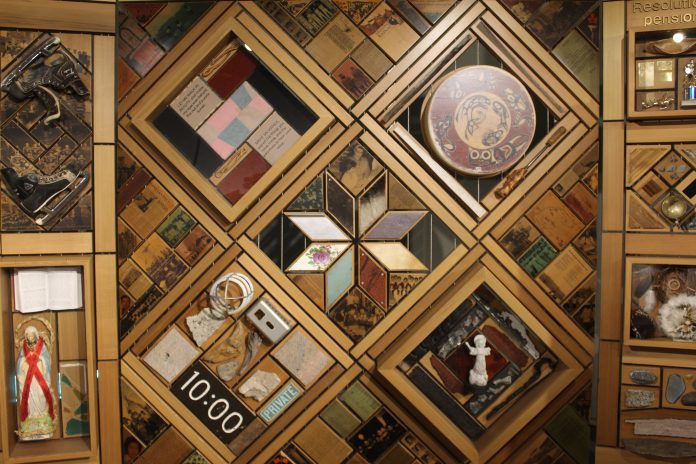The Witness Blanket, a 12-metre-long art structure, displays hundreds of pieces from Indigenous residential school sites, from survivors, and other important sites in Canada. Woven by Vancouver Island artist Carey Newman (Ha-yalth-kingeme), the exhibit has been travelling the country since 2015. After eight weeks of exhibition in the Student Union Society Building’s Evered Hall, the national monument’s time at UFV has come to an end.
The exhibit drew to a close on Wednesday, November 8 with a ceremony that began shortly after 6 p.m. The night was filled with traditional dances, sharing of culture, and heavy symbolism.
The seating arrangement was a circular plan, which we learned was a representation of the endless repetition of birth, growth, death, and renewal — essentially, the circle of life. It showed that everyone was equal and connected.
An important part of the night was to thank the artist for creating the Witness Blanket, and allowing the university to share the piece with the community. A blanket was wrapped around Newman by an elder. In Coast Salish culture, placing a blanket on an individual is a blessing that is meant to wrap the admiration from the community around the person, both physically and spiritually. This gift demonstrated the great honour and high respect held for Newman’s accomplishments. Infused with great prosperity, the blanket was also meant to evoke the same positive emotions from the night for Newman in the future, as well.
A core theme of the ceremony, reconciliation through the creation of the Witness Blanket, was a valuable experience for Newman. Present in the audience were a few who had survived the residential schools, and some who had relatives that had experienced the brutal system. Many stepped forward in the question and answer period to discuss the impact of the blanket in their own reconciliation journeys. While it was visible that reconciliation is a different process for every individual, the Witness Blanket is a visual and tangible piece of art for all, that captures feelings of grief, anger, and injustice.
The ceremony ended off with a traditional dance meant to clear the air of heavy emotions and distress. No one left empty handed, as there were pins and brochures distributed to all exiting guests. The closing of the Witness Blanket was certainly an eye-opening, thought-provoking, and unifying experience for guests in attendance.
As part of the next stop along tour, the blanket will be travelling to the First Nations University in Regina, Saskatchewan.


